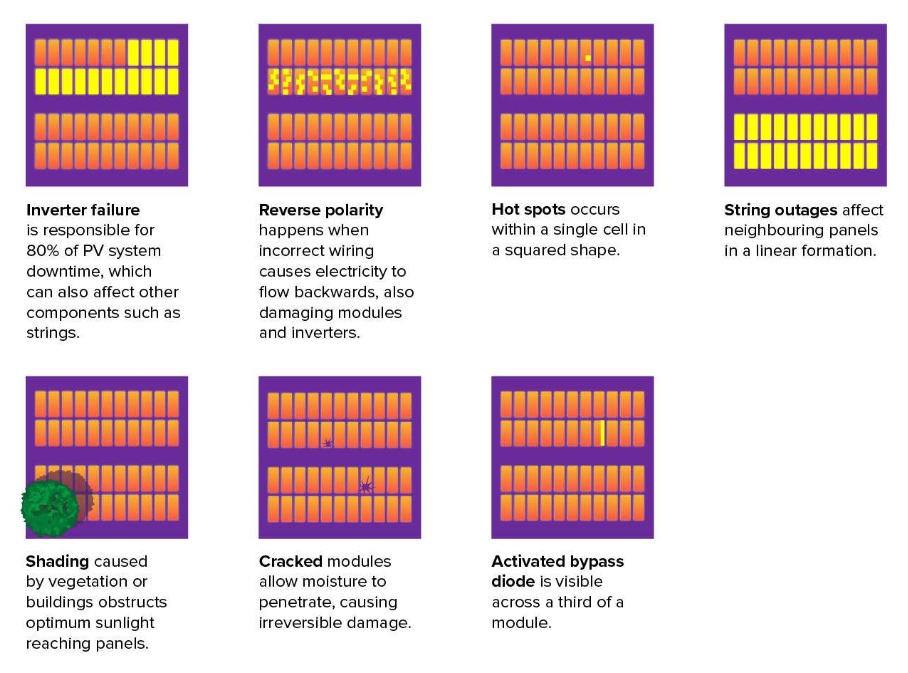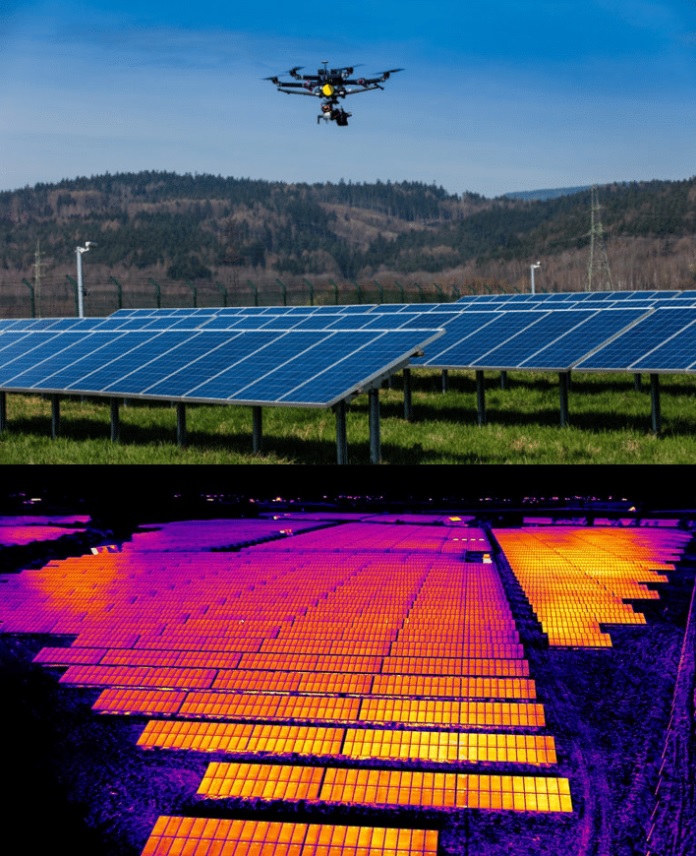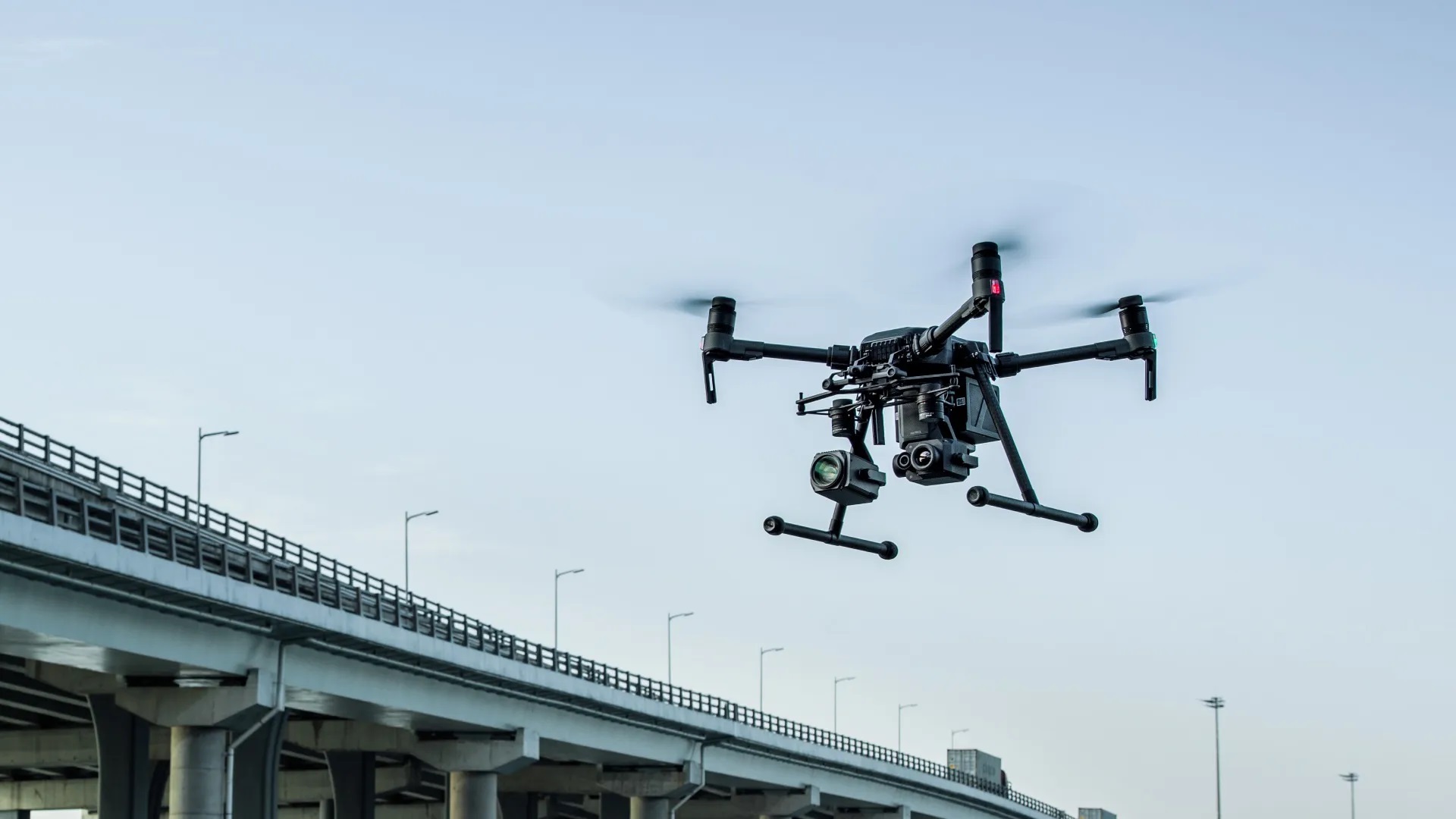What is a thermal inspection of solar panels with drone?
A thermal inspection of solar panels is a technique that uses infrared imaging to detect temperature differences on solar panels. This method helps identify defects such as overheated cells, malfunctioning bypass diodes, and other issues. By conducting these inspections, the performance of solar panels can be optimized, which is essential for maximum energy production.
When is a thermal inspection necessary?
- Periodic maintenance inspections: It is wise to regularly check solar panels to identify problems early.
- When energy production decreases: If the yield of the solar panels decreases, a thermal inspection may reveal hidden issues such as defective cells.
- After solar panel installation: An initial check can confirm that the panels are installed correctly and functioning properly.
- After extreme weather conditions: Storms or hail can damage solar panels. Thermal inspections help quickly detect any damage.
- Inspection of New Installations and Warranty Periods
It is important to regularly check new solar panel installations or those under warranty. Solar panels can be damaged during transport or installation, and this damage may not be immediately apparent in energy yield. By conducting a thermal inspection promptly, any defective cells (hotspots) or other issues can be detected early, preventing negative impacts on the installation’s energy efficiency. This not only helps optimize performance but also supports any warranty claims and extends the lifespan of your solar panels.

When can thermal inspections with drone be performed?
Thermal inspections of solar panels should be conducted on sunny days. Sunlight ensures that the solar panels produce energy, making any temperature differences visible through the infrared camera. These inspections can take place throughout the year, as long as the sun is shining and the panels are active.
How does a thermal inspection with drone work?
During the inspection, our DJI M210 drone, equipped with the Zenmuse XT2 camera, flies over the solar installation. The Zenmuse XT2 captures infrared images that show temperature differences on the panels. Defective panels often exhibit hotspots in the thermal images. In addition to these images, we also use the Zenmuse Z30, which allows us to zoom in to inspect physical damage or other visual defects without having to touch the panels.

Benefits of Thermal Inspections with drone:
- Quick diagnosis: Thermal drone inspections are much faster than manual checks, especially for large solar parks.
- Prevent energy loss: By identifying defective panels in time, energy loss can be minimized.
- Cost-effective: Preventive inspections help avoid costly repairs and extend the lifespan of the panels.
Examples of Use:
- Solar Panel Park: A solar park with over 500 panels was inspected, revealing some defective cells. Thanks to the thermal images, these defects were quickly identified, and the panels could be replaced without significant downtime of the installation.
- Commercial Installation: A company noticed a sudden drop in energy yield. Our thermal inspection revealed that some panels were damaged by storm damage. After repairs, the company could again optimally benefit from their solar panel installation.
Why choose thermal inspections by Droneview.be?
At Droneview.be, we utilize the latest drone and camera equipment, such as the Zenmuse XT2 and Zenmuse Z30, to conduct both thermal and visual inspections. This means we can not only detect hotspots but also zoom in on specific panels to identify any physical damage.
